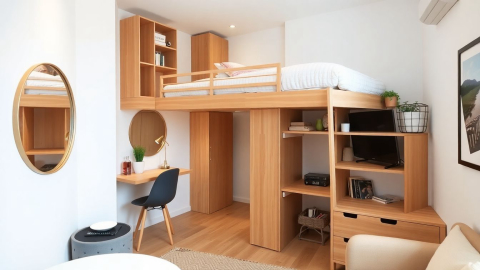Tuscan Interior Design: Bringing the Warmth of Italy into Your Home
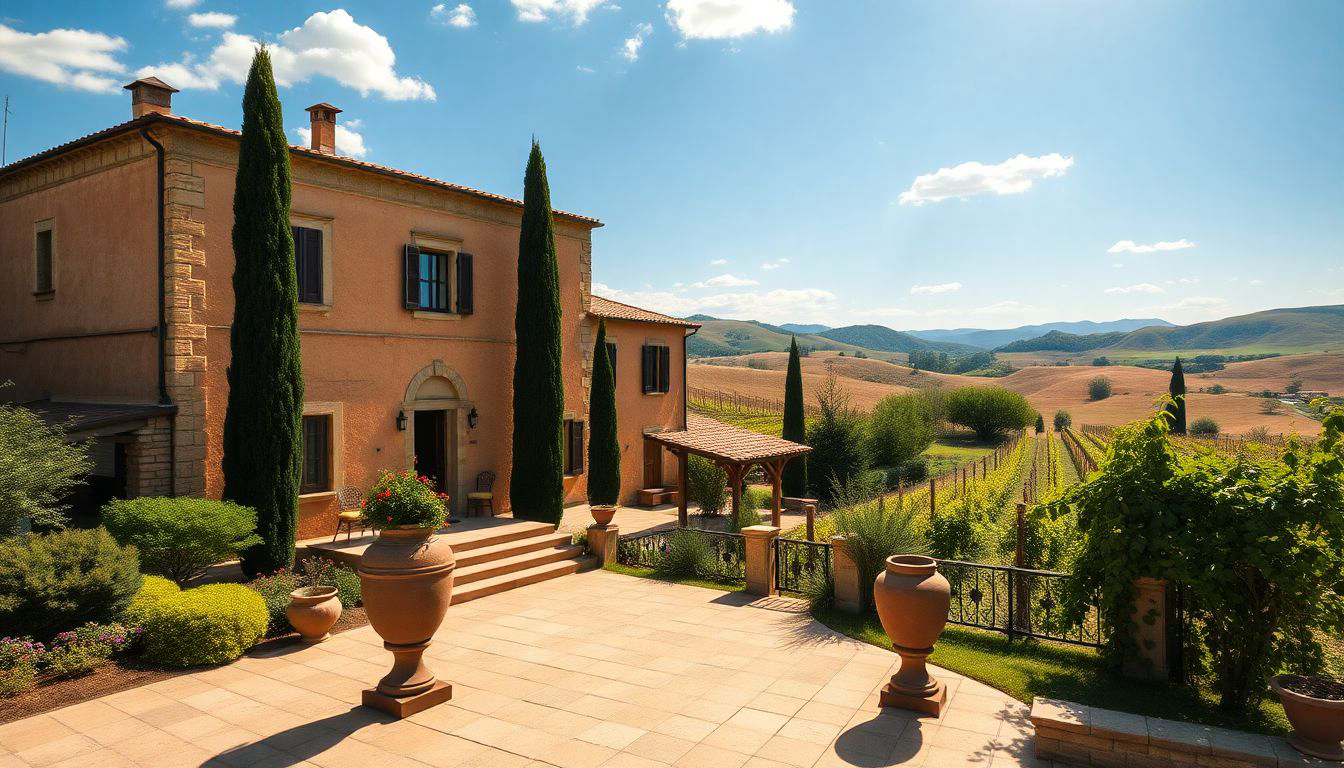
Imagine stepping into a sun-drenched villa nestled among rolling hills, where the scent of lavender and cypress hangs in the air. This is the essence of Tuscan interior design - a style that evokes the spirit of the Italian countryside, with its inky cypress trees, weathered farmhouses, and vineyards backlit by amber sun. Tuscan design has risen in popularity in recent years, captivating homeowners with its unpretentious air, robust warmth, and emphasis on comfort. It's a style that whispers of heart, history, and homeyness, offering a taste of a lifestyle that few of us will ever live but all of us can dream about.
The Foundations of Tuscan Design
Embracing the Outdoors
At the heart of Tuscan interior design is a deep connection to the outdoors. As Fiona Corsini di San Giuliano, owner of a stunning Tuscan farmhouse, demonstrates, this connection can be both literal and figurative. In her 15-acre property near Florence's Forte di Belvedere, the line between indoor and outdoor living is beautifully blurred.
To incorporate this element into your own home, consider creating an al fresco space where you can sip a cappuccino, tend to a pot of basil, or simply bask in the sun. Even a small patio adorned with pottery urns and creeping vines can capture the essence of Tuscan living. Water features, such as small fountains or trough-like elements along stone walls, can further enhance the outdoor ambiance.
Textural Walls and Gentle Colors
The walls of a Tuscan-inspired home tell a story of age and authenticity. Sandstone, stucco, and plaster are common treatments that instantly convey the impression of a farmhouse that has stood intact for centuries. When it comes to color, the Tuscan palette draws upon the land and sky: dusty green hills, brick-red earth, blue skies, and golden sunlight.
To achieve this look, choose shades of terra-cotta, tawny yellow, soft gray-green, and faded blue. The key is to select colors that appear as though they've faded gracefully in the hot sun. Don't be afraid of a little chipping or cracking in your paint job - it only adds to the patina and depth of the space.
Wooden Beams and Rustic Furnishings
Rough-hewn wooden beams crisscrossing the ceilings are a hallmark of traditional Tuscan homes. These elements not only provide structural support but also add a graceful architectural touch. Leave them unfinished to weather gradually, or stain them in a medium or dark shade that still allows the natural wood grain to show through.
When it comes to furnishings, opt for pieces that exude rustic charm. Wooden tables with turned legs, rush-seated chairs, and capacious dining tables that look as though they can hold several generations are all quintessentially Tuscan. As interior designer Renate Hering-Shepherd notes, "Rustic Tuscan kitchen tables are made of wood - the fancy ones have turned legs - they're usually mid-to-deep brown and stand uncovered in all their bare, natural beauty."
The Details that Define Tuscan Style
Shuttered Windows and Natural Light
In a Tuscan home, curtains and shades are often eschewed in favor of wooden shutters. These can be thrown wide to let natural light and breezes flood in, creating an airy, inviting atmosphere. If you do use draperies, stick to simple panels that can be pulled back to fully expose the windows.
Handmade Pottery and Accessories
Tuscany is renowned for its ceramics industry, and incorporating handmade pottery is an excellent way to infuse your space with authentic Tuscan charm. From dishware to enormous garden planters and sculptural vases, these pieces can be grouped on open shelves, mantlepieces, or patios to create visual interest.
Fiona Corsini di San Giuliano's approach to accessories offers a valuable tip: "When it comes to Tuscany style kitchen accessories, one way to cut down on expenses is to buy only one - or a few - fine exemplars of authentic Italian ceramics (='star') and then create bulk with simpler, locally available ceramics in a solid color (='chorus line')."
Wrought Iron Accents
While not as prevalent as in Southern French decor, wrought iron does have its place in Tuscan interiors. A decorative balcony railing, perhaps bearing a curlicue or filigree design, can add a touch of romance to your space. However, use these elements sparingly to maintain the rustic, earthy feel that defines Tuscan style.
Creating a Tuscan-Inspired Kitchen
The kitchen is often considered the heart of the home, and nowhere is this truer than in Tuscan design. A Tuscan kitchen should feel warm, inviting, and ready for family gatherings. Here are some key elements to consider:
- Natural Materials: Incorporate stone countertops, terracotta floors, and wooden cabinetry to create a rustic, earthy feel.
2. Open Shelving: Display your collection of handmade pottery and cooking utensils on open shelves for both functionality and decor.
- Large Island or Table: A capacious kitchen island or a long farm-style table provides ample space for food preparation and family meals.
4. Herb Garden: If possible, include a small herb garden near the kitchen window, bringing a touch of the outdoors inside.
- Warm Lighting: Use wrought iron or amber glass pendants to create a warm, inviting glow in the kitchen.
As Traci Morris notes in her article on Tuscan kitchen design, "It is possible to stay all day in this kitchen and not be sick of it!" This sentiment captures the essence of what a Tuscan-inspired kitchen should be - a space that's not just functional, but truly enjoyable to spend time in.
Blending Tuscan Elements with Modern Living
While traditional Tuscan design is rooted in rustic charm, it's possible to blend these elements with more contemporary aesthetics for a fresh, updated look. The home of Fiona and Diego di San Giuliano in Florence provides an excellent example of this fusion.
Their living room features frescoed walls and parquet floors - classic Tuscan elements - mixed with lamps found in flea markets and a console inspired by the benches in the train station of Santa Maria Novella. This eclectic approach allows for personal expression while maintaining the warm, inviting atmosphere characteristic of Tuscan design.
In the bedroom, hand-painted Celtic motifs inspired by a pattern found in an old book add a unique touch to the walls, while a portrait and simple iron bed maintain the Tuscan feel. This blend of personal touches with traditional elements creates a space that is both authentic and deeply personal.
Conclusion: Embracing the Tuscan Lifestyle
Tuscan interior design is more than just a set of decorating guidelines - it's an invitation to embrace a different way of living. It encourages us to slow down, to appreciate the beauty of natural materials and handcrafted items, and to create spaces that bring family and friends together.
As you incorporate Tuscan elements into your home, remember that the goal is not to recreate a museum-perfect Italian villa, but to capture the spirit of Tuscan living. Allow your space to evolve naturally, incorporating pieces that speak to you and reflect your personal journey.
Whether you're renovating your entire home or simply looking to add a touch of Tuscan charm to a single room, the key is to focus on warmth, texture, and a connection to nature. By doing so, you'll create a space that not only looks beautiful but also feels like a true sanctuary - a little piece of Tuscany that you can call your own.
References and Further Reading
More Articles
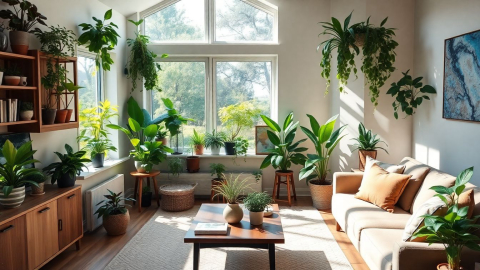
Inspiring Indoor Plant Decor: Transforming Spaces with Nature's Touch
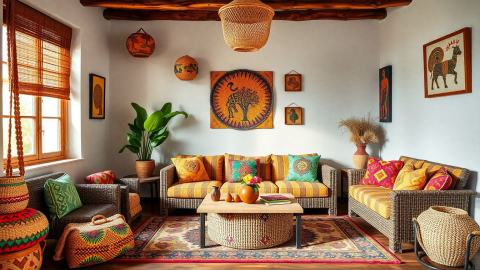
The Soul of Africa: Embracing Vibrant Design in Modern Interiors
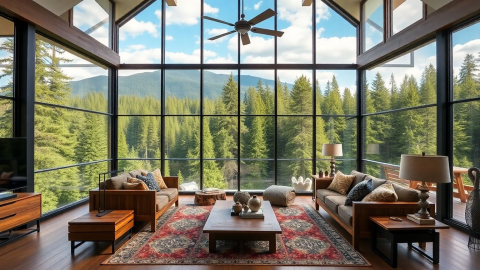
Northwest Interior Design: Embracing Nature, Innovation, and Sustainable Living
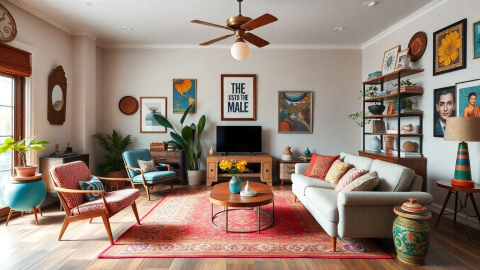
The Art of Eclectic Interior Design: Blending Styles with Soul
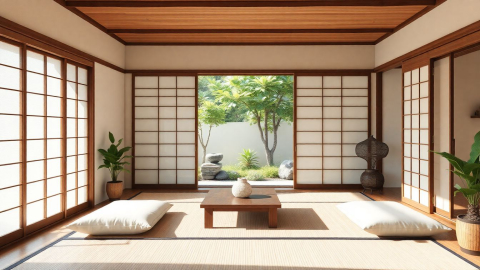
The Art of Zen: Exploring Japanese Interior Design
